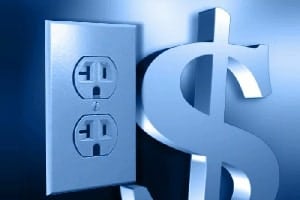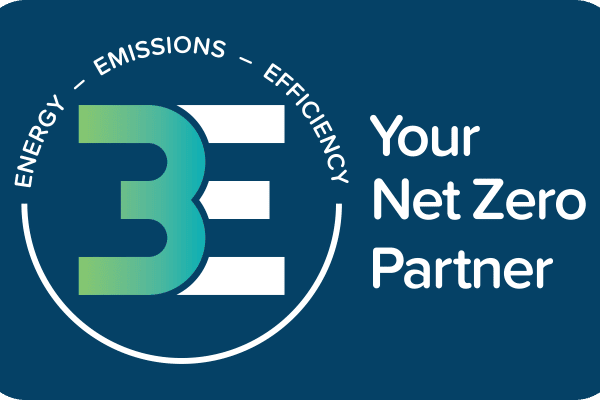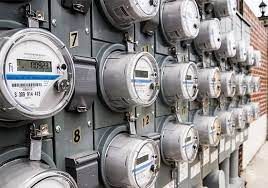Many of our clients have reported in recent months they’re paying almost double and in some cases more than double the amount for their electricity and gas utility bills. When you consider that this translates to literally hundreds of thousands of dollars in additional expense, then you realise this is not a trivial issue. It’s a serious issue that needs to be addressed if an organisation is to survive and thrive. Property managers, Facility managers and sustainability managers now find themselves under a lot more pressure from CEOs and CFOs to find ways how to reduce high energy costs.
If you ever get to see a large market utility (electric, gas) bill of your organisation, then you will likely experience Bill Shock too, and start seriously looking at ways on how to reduce high energy costs as energy prices continue to escalate.
Read on to learn the truth about energy price increases, how to decode your utility bill and four practical ways to reduce high energy costs.
Click here to read our previous post on how organisations can save money with energy savings projects.
Spiralling energy costs
According to the Australian Competition and Consumer Commission (ACCC), retail customers in the National Electricity Market now pay 44 per cent more in real terms for electricity than we did 10 years ago. Electricity prices and gas prices have indeed skyrocketed.
All Australian households and businesses have been affected. Perhaps even more so are large energy using organisations that consume substantial amounts of electricity and gas. Big businesses, state and local government departments, manufacturers, hospitals, colleges and universities, I.T. data centres etc. that are coming off contract will be shocked by the significant rise in energy costs.
Reasons for high energy costs and how to make sense of your Large Market Utility Bill.
To understand the real reasons behind high energy costs, one must first understand the composition of large market utility bills i.e. the main types of charges that comprise a standard utility bill.
There are four main components that make up your Large Market Utility bill.
- Generation costs or Wholesale charges – the cost of generating the electricity or gas
- Network charges – the cost of transporting the electricity or gas
- Retail charges – the cost of billing and servicing the customer
- Environmental charges – the government policy component – the cost of environmental schemes, certificates etc.
All of these costs are passed on to the customer regardless of which energy retailer you are with.
 Breakdown of energy costs per component
Breakdown of energy costs per component
Wholesale charges
The truth is that up until 2009, wholesale charges / generational costs were relatively low given historical conditions of consistent oversupply in the market. When demand started dipping at that time, generators were forced to produce less electricity for lower prices, which had put pressure on the finances of existing fossil fuel generators. With added political pressure surrounding climate change and push for renewables, a number of coal-fired power stations were consequently either mothballed or retired in rapid succession. This caused a sudden shift in demand and supply balance and an ever-increasing reliance on gas-fired generation at a time when gas prices are astronomical.
Australia has failed to build enough new generation over recent years to reliably replace ageing coal plants and despite developments in battery storage technology, there are still major concerns about intermittent sources of energy from solar and wind farms that are vulnerable to weather and climatic conditions.
Network charges
The largest portion of your electricity bill charges for Network costs. Australia is a vast and expansive land so transporting electricity around is an expensive business. Network charges have contributed 40 per cent to the total price increase over the last decade.
What has caused this increase? Network businesses are heavily regulated (their costs, charges and profits all have to be approved) and regulated in a way that encourages network businesses to pump extra spending on reinforcing infrastructure to improve reliability, avoid blackouts etc.
Between 2005 and 2016 the total value of the National Electricity Market (NEM) distribution network increased by 70 per cent, from $42 billion to $72 billion. During that time, however, there has been little change in the number of customers using the network or the amount of electricity they use. As a result, every unit of electricity we consume costs much more than it used to.
Retail charges
The second-largest increase in your large market electricity bill is due to retail charges. Retail charges are the costs (and margin) imposed on their customers for billing and servicing. Across the NEM, 26 per cent of price increase over the past decade has been due to retail margins. Retailers spend money on marketing to recruit and retain customers.
Retailers have also paid substantially more to procure electricity supply for their customers over the last decade. In other words, retail electricity market rates have increased. Taking the average of increases across NSW, VIC, QLD and SA, retail electricity market rates have increased by more than 49 per cent, according to Energy Action’s Exchange Price Index – an index to represent the commodity price of retail electricity showing a condensed view of the lowest-priced bids from each energy retailer.
Environmental / Renewable Energy charges
The direct cost of government green schemes that are supposedly curbing emissions accounts for around 16 per cent of the total price increase over the past decade.
Other charges
Depending on which retailer you are with, a number of ‘other’ charges are items associated with the sale of electricity to your premises in accordance with your agreement including metering charges, connection fees, Market Charges levied by AEMO with Distribution Loss Factor Adjustment, as well as Green Energy (if applicable). In other words, the retailer passes on costs incurred by the network provider and wholesalers.
Bill Shock is typically experienced in four stages
- First, sheer surprise (and not of the good sort) as to how energy prices have skyrocketed compared to those of previous months and years.
- Second, bewilderment, regarding the complex nature of how energy bills are structured as you study the energy bill in anguish in an attempt to verify and rationalise the ever-increasing expense.
- Next, you start to develop feelings of indignation or anger toward energy retailers who are seemingly laying on thick various fees and charges with little to no explanation as to what they are charging you for and why.
- Finally, you may feel a sense of helplessness as to what your organisation can do to reduce high energy costs as energy prices escalate.
How to reduce high energy costs and cure Bill Shock
There are several ways organisations can reduce their spend on rising electricity and gas bills.
-
Create a culture of energy conservation
One way to reduce high energy costs is to simply consume less energy by creating a workplace culture of energy conservation and sustainability.
For example, encourage colleagues to turn off unused power points and lighting in unoccupied areas and keep blinds or curtains closed during hot days to keep solar warmth out and reduce load on AC units; only boil the amount of hot water you need rather than a kettle at full capacity (in so doing takes considerably less time and consumes much less electricity). These may seem like small and petty examples but over time it certainly does make a difference.This strategy will only work if the entire workplace has a culture of conservation and that only happens if management demonstrates leadership in this area.
-
Energy Procurement
Next on our list of how to reduce high energy costs is to have your utility bills reviewed, verified and validated by an independent energy services company (i.e. not by your current energy retailer). In many cases, there are potentially thousands of dollars in savings by either having your contract renegotiated or set up with a different retailer offering a more competitive deal. An energy services company with experience in energy procurement deals can help develop an energy procurement strategy for your organisation. An energy procurement professional or sustainability engineer can quickly identify savings opportunities, through tariff analysis, compare and evaluate retailers’ offers, and handle the entire energy procurement process for you on your behalf. See the following case study of how Ecosave saves Bupa thousands of dollars every year.
-
Get a detailed Energy Assessment of your facilities
A comprehensive audit of your facilities’ energy utilisation is a good starting point for those who are concerned about how to reduce high energy costs in large organisations. A detailed energy assessment will provide you with facts and figures about how much electricity and gas is consumed broken down by major energy using devices / plant and equipment across your facilities. You’ll also get a good idea of where energy savings could potentially come from and energy audits include varying levels of recommendations on energy conservation measures (ECMs).
Energy Audits (level 1 and level 2) typically fall short when it comes to detail, accuracy and financial modelling of recommended energy conservation measures. An Energy Efficiency Opportunity Assessment on the other hand, provides a detailed look at energy utilisation and lists specific ECMs in order of priority and includes estimated costs and expected payback projections. This gives you a much better guideline and template from which you can go to market with a tender to procure an energy services company to implement an energy efficiency project.
-
Get a quote for a performance-based Energy Efficiency Project
A more direct response on how to reduce high energy costs is to invest in upgrading your facilities with energy conservation measures (ECMs) in a facility wide energy efficiency project.
Common examples of ECMs include: replacement of fluorescent, incandescent luminaries to LED lighting, installation of Solar PV panels, upgrades to HVAC system (heating, ventilation air conditioning), boilers, chillers, building sealing and insulation; installation of motors and controls such as Variable Speed Drives (VSD) and motion sensors.
Best practice energy efficiency projects are designed, installed and commissioned by a single contractor – energy savings company – that is able to provide some type of performance guarantee. These projects are typically capped priced proposals with performance-based service agreements that contractually oblige the energy savings company to deliver on pre-agreed outcomes at practical completion of the project.
The result? A guaranteed outcome with predictable return on investment whereby future cost savings from ECMs offset the investment of the energy efficiency project. Click to read our article on energy savings strategies to reduce high energy costs.
Energy and water efficiency makes good sense particularly when energy costs are so high, however capital is not always available to invest in energy efficiency projects that are not core business. An Ecosave Services Agreement is a unique funding solution that’s off-balance-sheet, requires no upfront capital and is cash flow positive from day one – saving money and saving resources for your business or organisation…learn more.
For assistance to reduce your high energy costs, Book a FREE Consultation with one of our Energy Solution Advisers today.
Or Call 1300 55 77 64 to find out more.


 Breakdown of energy costs per component
Breakdown of energy costs per component



